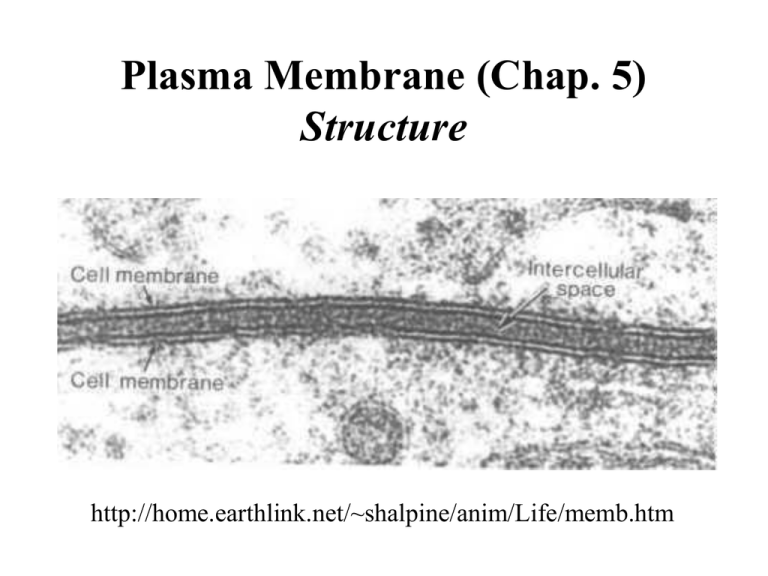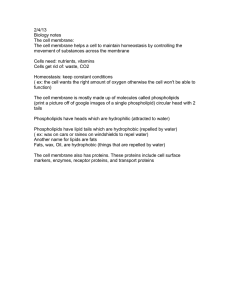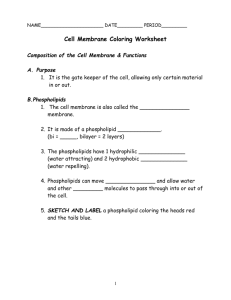Plasma Membrane (Chap. 5) Structure
advertisement

Plasma Membrane (Chap. 5) Structure http://home.earthlink.net/~shalpine/anim/Life/memb.htm • Thickness of 7-8nm • Primarily made up of phospholipids (Fig. 5.2 in text) • Have different types of proteins and cholesterol dispersed between the phospholipids. • The fluid mosaic model – membrane can move and yet is very stable because of hydrophobic and hydrophilic properties of phospholipids • Proteins are visible by a freeze-fracture technique where tissue is frozen (use liquid N2) and then split along the phospholipid bilayer through its hydrophobic tails. Viewed by SEM or TEM. The Plasma Membrane; Three Main Components (other than phospholipids) 1. Cholesterol • amphipathic (have both hydrophilic and hydrophobic regions just like phospholipids) • prevents the fatty acid tails from packaging tightly therefore, membrane is more fluid-like. • however at the same time, it decreases permeability to small water-soluble molecules. (Understand Fig. 5.8 in text) 2. Proteins • Functions – hormone binding sites – some are enzymes that carry out reactions right in the membrane – electron carriers (more on this later) – channels for passive and active transport of materials in and out of the cell • Categories of Proteins I. Integral proteins – amphipathic – some go through only one of the phospholipid layers of the membrane (lipidanchored proteins) and others extend completely through the membrane and are well secured (transmembranal proteins) II. Peripheral proteins – lie on the surfaces of the membrane – usually attached to the protruding portions of integral membrane proteins 3. Glycocalyx • visible (by TEM) as a fuzzy, outermost region of the cell. • a sugar coating over the membrane surface made up of short chains of glucose attached to the proteins (glycoprotein) and/or phospholipids (glycolipid) • helps: – protect the cell – the cell recognize, identify, and interact with other chemicals, viruses, and bacteria







